Class Info
Date: October 3, 2023 (Tuesday )
Meeting Info: In person, Pearl 116, 8:30 to 11:00am, followed by Professor’s office hours from 11:00am to noon in Pearl 116.
Content of book for submission and presentation due this class. Upload PACKAGED FILE containing PDF. For instructions, see Class 10, toward the end of the class info.
Overview of completed book (Professor Beth Tondreau)
Book done last year (Note: our book has 15 pages)
Another example of a completed book (Professor M. Giuliani)
Topic
- Presentation and Critique: Project I
- Book (Project I) Presentations today
- All students must participate in presentation (as presenters and as audience)
- Introduction to Project 2: Expressive Typography, Lettering and Typography & Color / This part of the semester will also explore process.
- It is important to do all steps as specified.
Objectives
- Present Project 1. Assess understanding of fundamentals of typography for clear and factual communication.
- Students continue to gain experience in how to present and talk about their work.
- Students continue to gain experience in how to critique
- Introduction to Project 2. Expressive Type (Typography as Expression)
Warmup. Type Challenge.
What is a typeface? What is a font? (Note: the words are often used interchangeably.) What is the classification of each of the two images below?
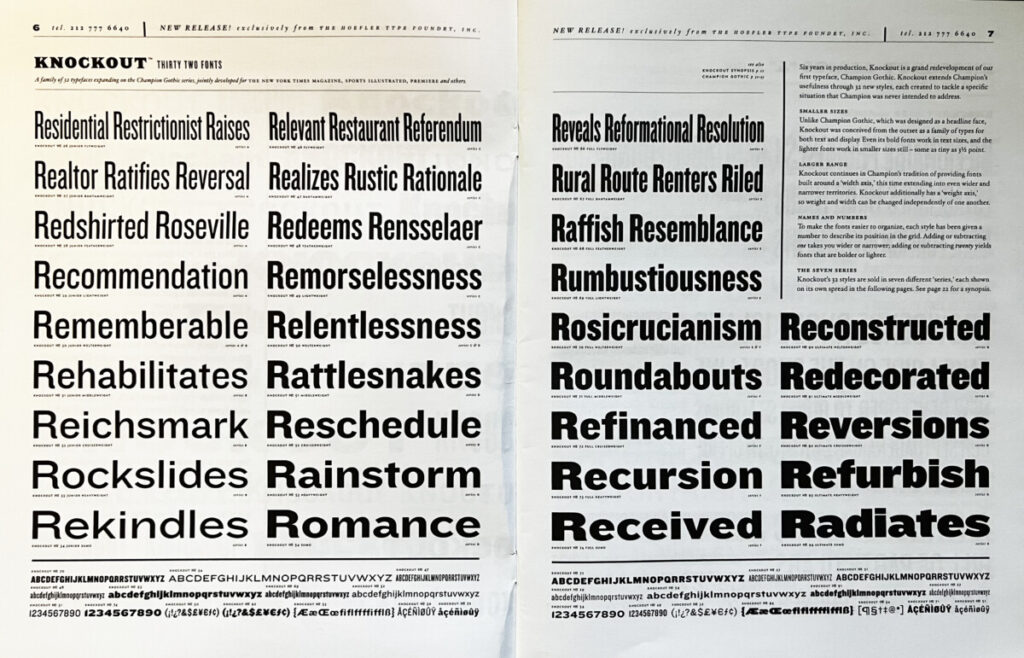
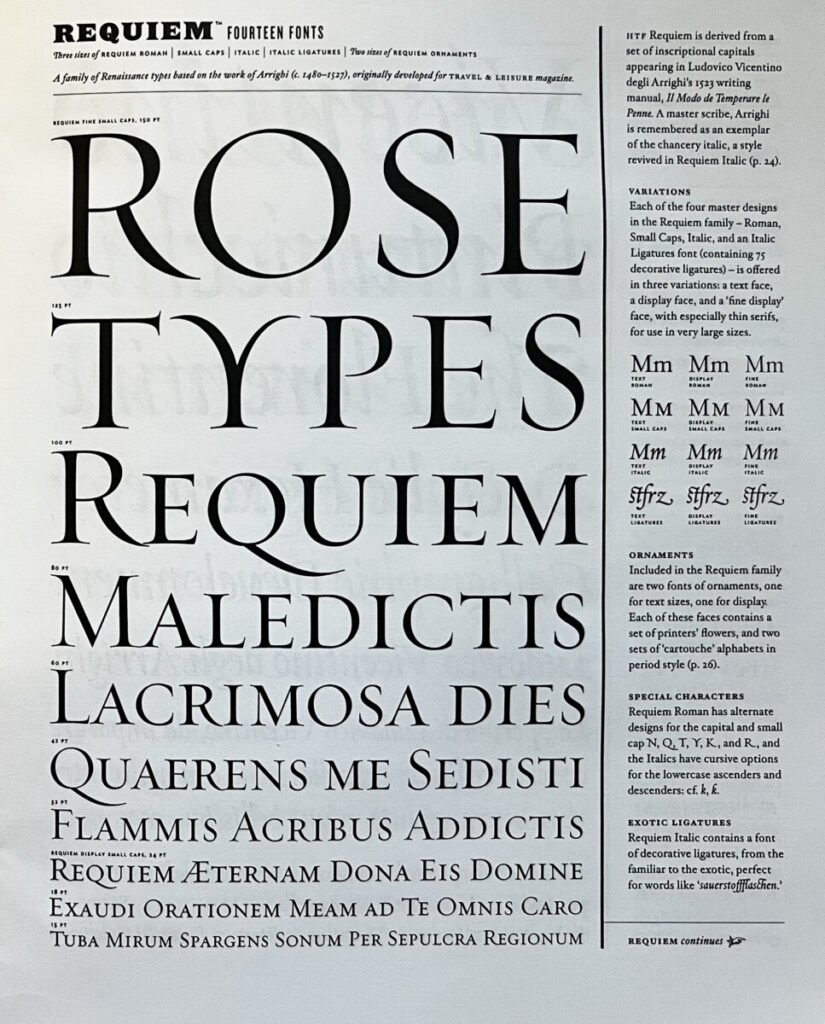
What do you observe or learn from each of these two images?
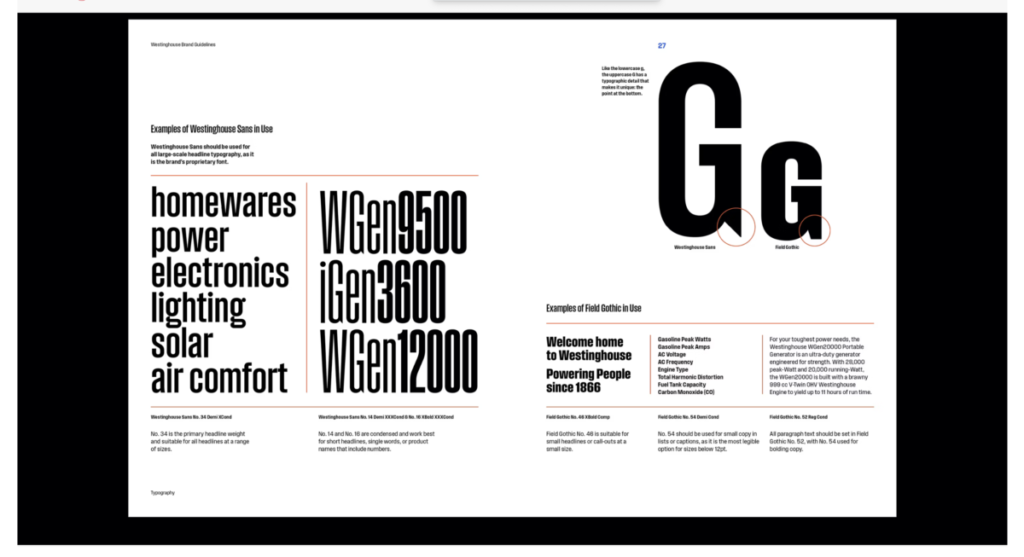

Which of these images is rotated and which is vertical type?
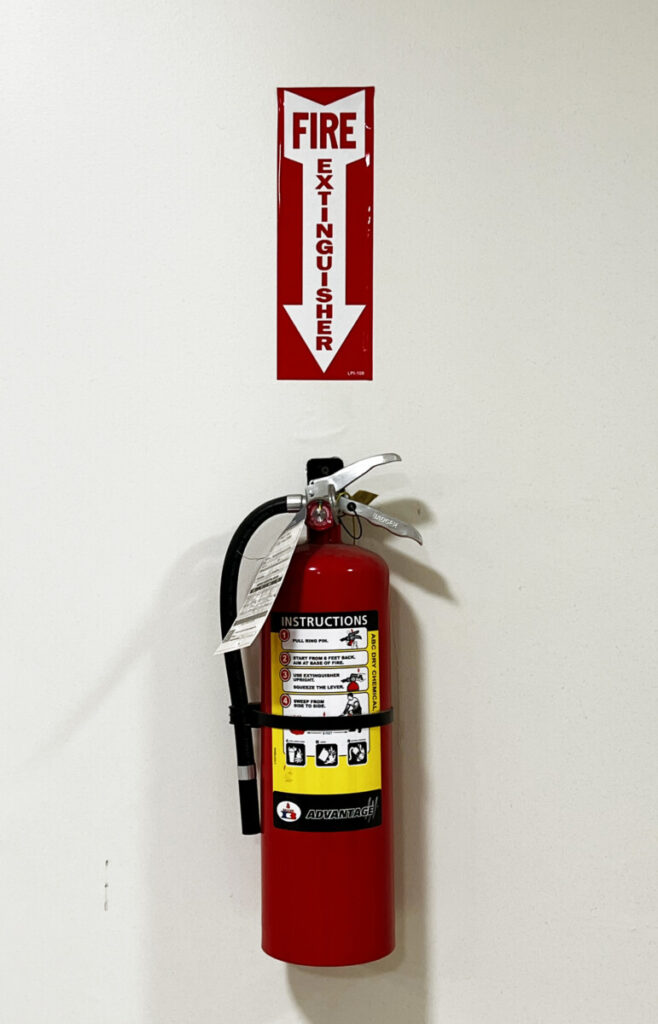
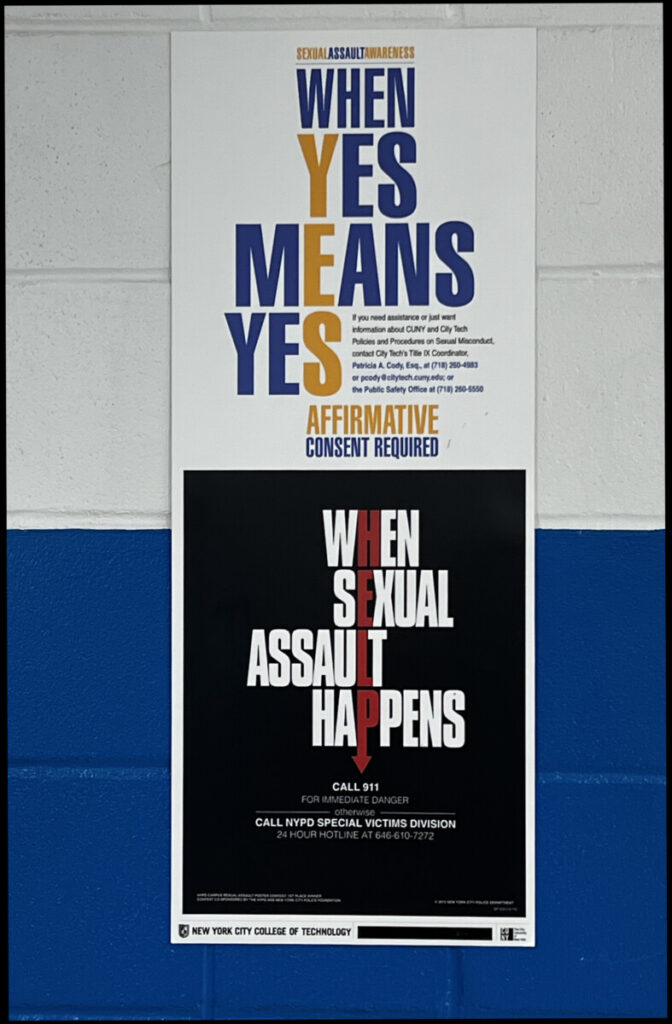
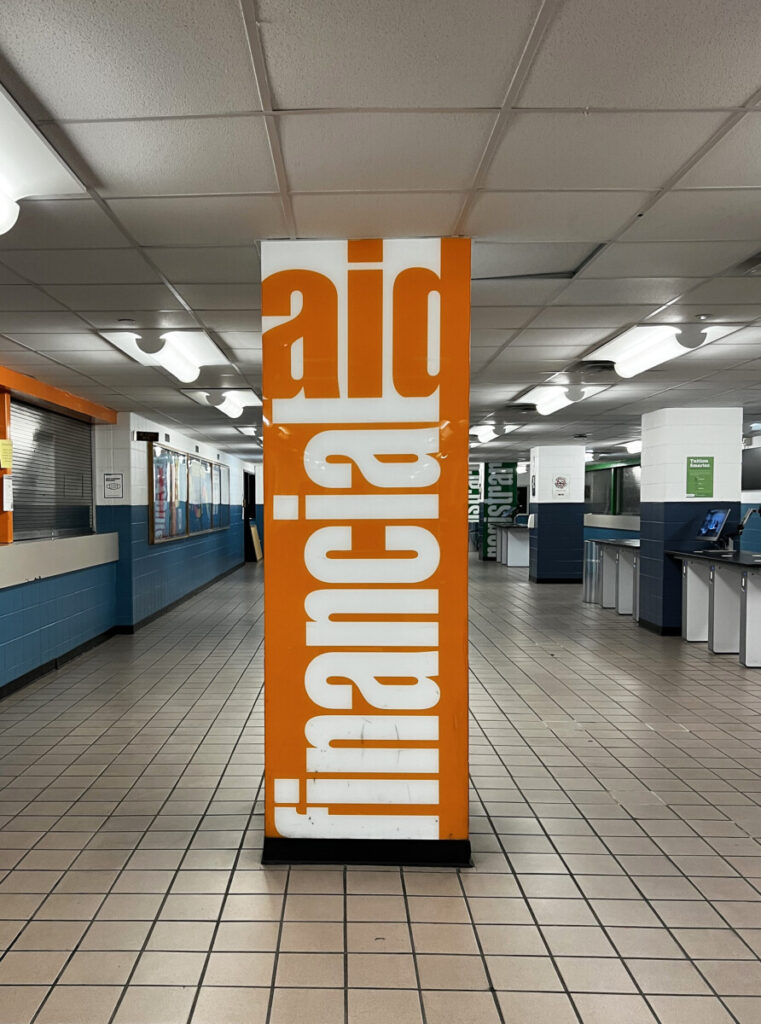
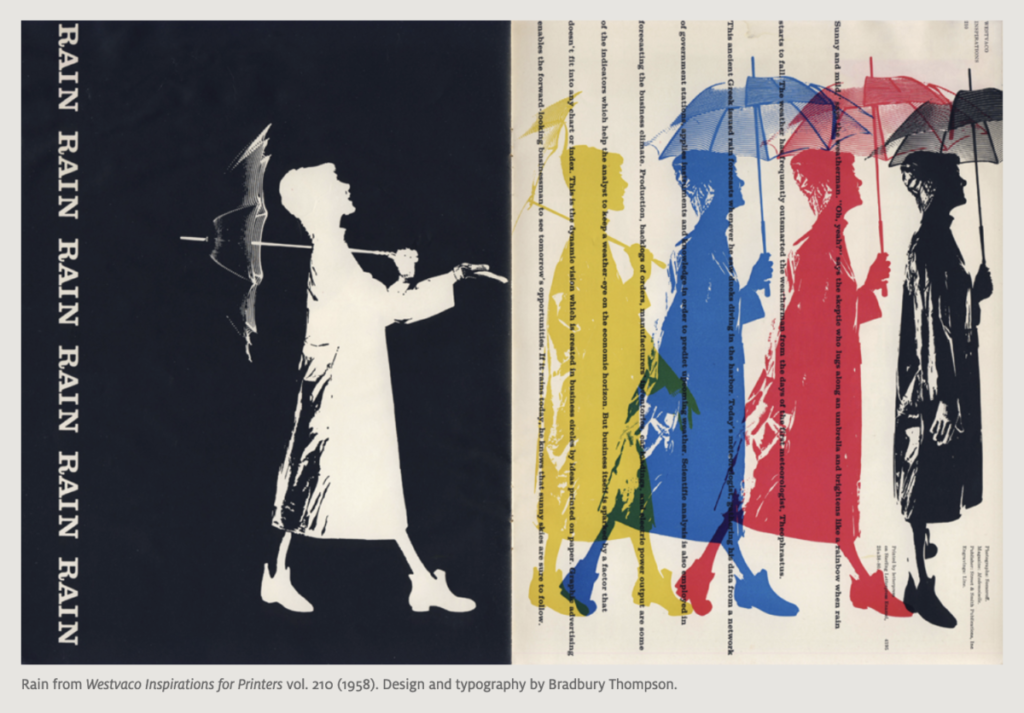
Go to Student Post > Type Challenge> Post the answers to the questions about the images in A, B, and C.
Lastname_TTC_100323
• • •
Activities for Project 01
- Presentation. 17 students. 5 minutes per student. (85 minutes = 1.4 hour). At the desk at the head of the room, go through your PDF and describe your pages. What is the most interesting thing you learned from Project 01?
Activities for Project 02
Remaining class time:
Step 1
Expressive Typography with a typeface
We will explore how the use of an existing non-display Sans Serif typeface combined with traditional elements of design allow designers to convey the meaning of a word
- TYPEFACE (and their families & variations)
- SIZE
- SCALE
- POSTURE
- CASE
- PLACEMENT
- REPETITION or OMISSION
- COLOR
- Please see this Quick Reference PDF with Expressive Type/Lettering Basic Info
- then see these examples from Courtey Wagasky
Expressive Typography from Courtney Wagasky
Project 2: Step 1
You can use this template (if you have a printer) for sketching. If you do not, then work with a similar proportion. Squares on template are 2 inches (square). SPECS are here too.
- Choose SIX of the following words :
focus / confusing / shrink / extravagant / sinking / tired / divided / strong / damaged / cheer / fading / drip / dismantle / omission / fast / slow / amplifying / flying / pouring / random / celebration / squeeze / giant / cracked / windy / tumble / floating - Find the definition of your selected words (even if you know the meaning, researching their definition can sometimes help you generate ideas).
- Sketch your word in creatives way (Sans Serif typeface only). Use a square area to sketch your words.
Sketch WITH A CONCEPT IN MIND (what is your intentions) and PURPOSE as opposed to simply placing words in space.
If it is to be outlined, then sketch it that way.
If it is to be condensed or bold, then sketch it that way
- Consider: scale, repetition, overlapping, removal, uppercase, lowercase, etc. to create a visual definition of the word.
- ADD your thoughts (bold next to light words)
- Avoid using horizontal and vertical scaling.
- Do not add ANY illustrations. You are conveying the meaning of the word with the SANS serif typeface; you are not drawing or illustrating.
Below is the first page of six pages of the specifications and template noted above and in this paragraph.
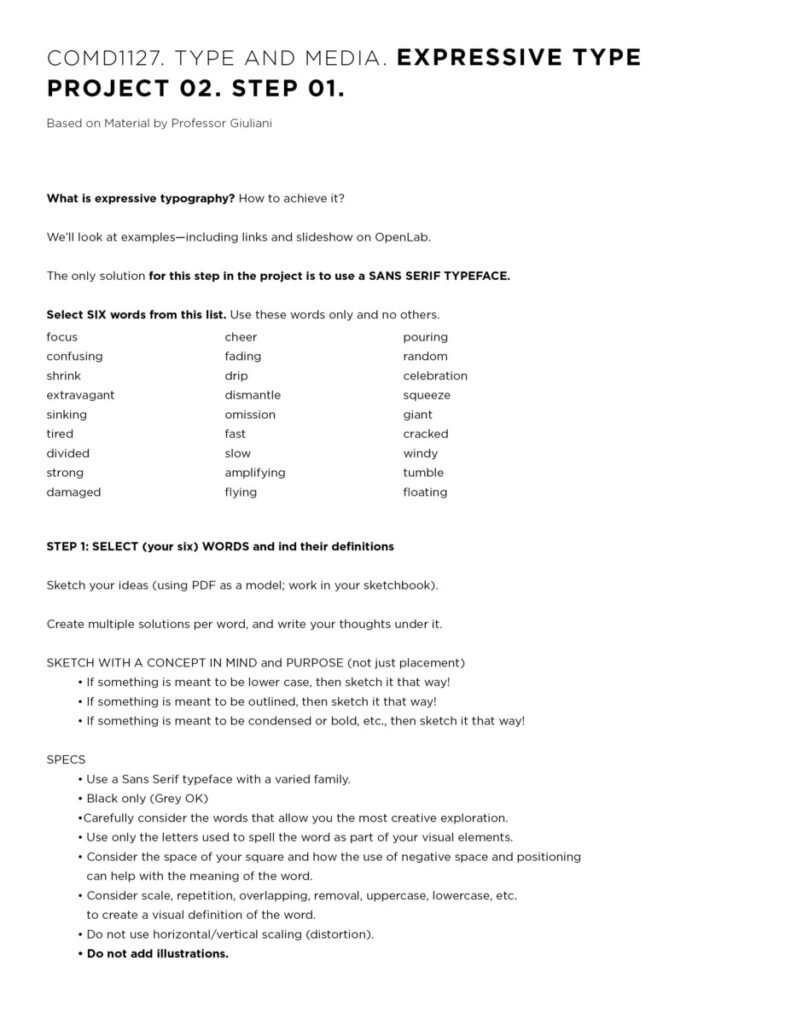
Below is an example. Only two are shown here. You’ll do 6. (Coming up with concepts is time-consuming. Sketch first. Use pencil. If you look closely, you can see a lot of erasures (which are fine and part of the sketching process!).
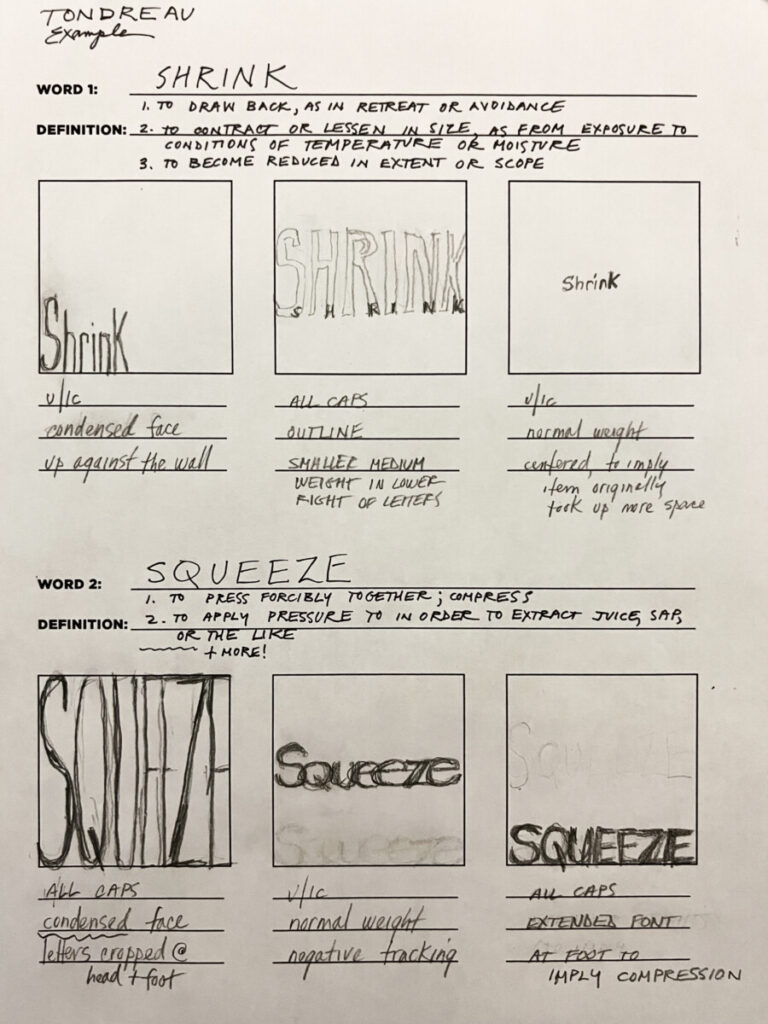
To-Do After Class: 2 Assignments
Assignment 1. Sketches = Preparation
- Complete sketches for all 6 words.
Save JPG: Lastname_sketches_words_100323 - Upload to Dropbox.
- To prepare for Class 12, find and activate or download and save three (3) different SANS SERIF typefaces. These should have extensive variations of WIDTH, WEIGHT, POSTURE.
Assignment 2. Make refinements to your completed Type Book, per feedback in Class 11.
- Package your file.
- NOTE: Refinements to completed Type Book are not the same as handing in a completed Type Book late. It means going beyond as opposed to catching up.
- Save as: Lastname_REFINED_Completed_TypeBook_100323
Optional: Type Talk
- Write a post about the differences you see in the expressive type with by Courtney Wagasky (using existing letterforms) and the expressive type by Timothy Goodman and Alexa Edgerton. Discuss one specific example, with one specific characteristic by each of the three designers.
- Upload to Post>Student Posts>Type Talk
- Lastname_TT_ExpressiveType_100323
____________________________________________________________
NOTE:
Students who presented work on Oct. 3: Julissa, Ana, Nancy, Evangeline, Paola, Zacarah, Keylin.
Students who uploaded work, as specified, before class on Oct. 3: Marsena, Justin.
Students to show work on Oct. 5: Marco, Marsena, Sarah, Justin, Mauricio, Shena, Sebastain, Elwis, Prianne.
______________________________________________________________
Graphic Assignments are always due the day before next class by 8pm, and must be placed in class drive unless indicated otherwise. Assignments go into Dropbox. Participation Activities go into OpenLab.
____________________________________________________________________
Print this page



Leave a Reply